We are sure you will agree that today’s posts have given a lot of food for thought. We have one final bonus post tonight from natural dyer and knitter Julia Billings, AKA Woollenflower.
This summer Jules was back in her homeland of Australia to teach natural dyeing workshops at Tarndwarncoort, Western Victoria. This is where the Polwarth breed was developed in the 1880s, by Richard Dennis – Jules visited with the current Dennis family at Tarndie and finds out more about the Polwarth breed and the yarns they create.
Since moving to Glasgow from Australia earlier this year, I’ve been struck by the sense of place and tradition in the Scottish (and larger British) wool industry and community as a whole… Hefted sheep, the traditional cottage industries of Shetland, Fair Isle and the Scottish Fleet, the fact that entire communities were once built around and supported by mills producing yarn and cloth and the many associated side industries-all this gives weight and importance to the push by so many to re-energize the British wool industry.
It’s all got me thinking about where my wool tradition is… For a country not long on the international stage, Australia has a rich wool history, due mostly to its strong links with Britain; it literally “rode the sheep’s back” to prosperity. But, although my grandmother’s family were Scottish immigrants who made it running sheep in South Australia in the 1860’s and my grandfather worked as a wool broker all his life, like most of my generation born in the 1970s and 80s, I didn’t learn to knit as a kid. So, as a relatively new knitter, I’m just realizing how deeply enmeshed wool is in the development of the country, both economically and culturally.
The Australian wool industry dates from 1797, when John Macarthur and Reverend Samuel Marsden imported Spanish Merinos in an attempt to start a wool industry (up until then, the only sheep in the colony were the fat-tailed sheep brought by the First Fleet from the Cape of Good Hope and used primarily for meat). In 1821, the first Australian wool was sold at Garraway’s Coffee House in London and, by 1840, Australia was producing more than two million kilos of wool each year, making many squatters and pastoralists hugely wealthy. Much of the wool produced in Australia over the next 100 years was funnelled back into the British wool cloth industry.
By the 1880s, business was booming and sheep breeders gathered in large numbers in metropolitan centres to buy and sell stock and wool each year:
“One of the most remarkable sights in Sydney is that of the Wool Exchange in full blast. Both buyers and brokers are men of weight and substance and responsibility in the community, but when the auctioneer puts up a lot, the buyers spring to their feet, wave their catalogues over their heads, and shout their bids frantically at the seller… It is not unusual for 100,000 [pounds’] worth of wool to be put through during an afternoon.” Sydney Mail, October 16, 1897
By the late 1890s, falling wool prices and the Federation drought had devastated the wool industry; flock numbers were halved and industrial action by shearers seeking better wages and conditions took its toll (interestingly, the unions formed as a result of this action were the forerunners of the Australian Workers Union and, in turn, the Australian Labor Party). Two world wars and the 1929 depression affected wool prices, demand and jobs, but the industry boomed again in the 1950s. By now, other agricultural industries (wheat and cattle) had overtaken in economic importance and the focus for sheep farmers shifted from wool to meat. Various dual-purpose breeds, such as Merino and Corriedale, now form the core of the Australian wool industry and are run on huge stations with many thousands of sheep. Local Merino wool forms a huge part of the industry, producing a high-quality, luxury product on a large scale that is largely sent offshore to the international fashion and textile market.
So where does the small producer fit into the Australian wool industry? What if you aren’t running thousands of Merinos for the international market? Is there a place for you?
I’ve visited the small, wool-producing property Tarndwarncoort (or Tarndie, as it’s fondly known by locals) several times, most recently in September, when I met up with owners Wendy and Dave Dennis and son Tom to run a natural dye workshop.
Tarndwarncoort in south-eastern Victoria in 1880. With its vast, dry conditions, Australia is relatively well-suited to sheep production and merinos imported from Spain and Africa coped well with the warm, dry lands of New South Wales. However, in the southern, cooler and damper areas of Australia, they coped much less well, resulting in stress to the animal and an inferior fleece. Growing up in Australia, Richard Dennis knew the environment and he realised that the traditional Merino needed a boost to adapt to this antipodean climate. He crossed Saxon Merinos from Tasmania with Victorian Lincolns and then joined the progeny back to the Merino and bred to a fixed type. These un-mulsed sheep were named Dennis Comebacks, later renamed Polwarth after the local electorate. Polwarths are now mostly found in higher rainfall regions of south-eastern Australia with improved pastures and have been exported into many countries, including South America, where they are known as Ideals.
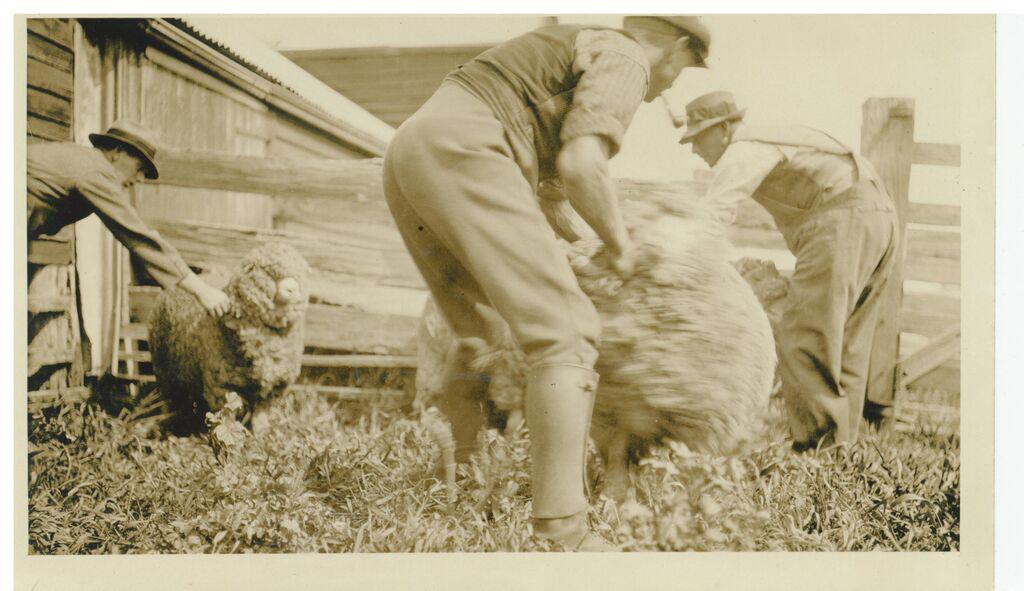

Dave and Wendy continue to grow Polwarth wool at Tarndie, maintaining the original bloodlines in a flock referred to as the “Blue Dots”. Tom and I had a great chat about the joys and challenges of running Tarndie…
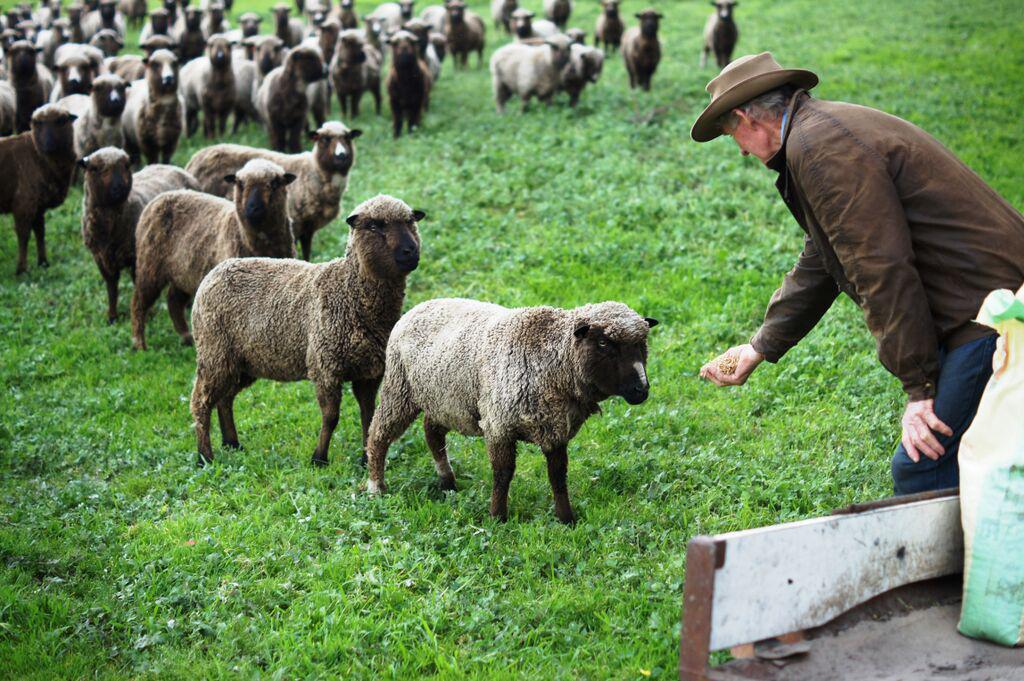
Julia: Was the Polwarth predominantly developed by the Dennises as a dual purpose breed or more for fibre?
Tom: It was bred as a dual-purpose sheep – but more so, it was bred as a way to grow wool in marginal sheep country, because the southern regions of Australia have a higher rainfall than the initial flocks of Saxon merino were suited to.
The breed is now marketed by the Polwarth Association of Australia as a dual-purpose sheep and is considered a conservation breed.
Who was the customer for the fibre at that time and over the next century?
All fibre was sold at auction– our agent was Dennys Lascelles in Geelong, the initiator of wool auctions in Australia, and our wool was part of the very first auction in 1857. From there it would have been sold to British cloth manufacturers. It was sold as “AAA or Dennis Comeback” until the 1950s, when there was a push to sell it as branded Polwarth wool. Polwarth is around 23 microns, so it sold to a similar client base as Merino– for clothing mainly.
Which qualities do you most value in the Polwarth, both as a breed and fibre? And what do you think the fibre works best for?
Breeding Polwarths is made so much easier by their quiet nature and good lambing. The fleeces are heavy, averaging 6-7 kgs, and the fibre has great softness and length (up to 130mm), all of which make it lovely for handspinning and felting. And of course, the beauty of the natural colours, the blacks and browns and especially the silver-greys, is a wonderful quality…
I know your tops and yarn are prized by local craftspeople… How much of your fibre is sold as unprocessed fleece, compared to tops and yarn? And where and who to?
We sell more unprocessed fleece than tops or yarn; most goes to local spinning guilds and spinners but we export about 20% of our annual clip to overseas handspinners! Our main overseas wholesaler is based in Kyoto, Japan, but we also send fleeces to customers in a wide range of places – such as the US, Russia and Europe – through our online shop. We coat some of our sheep to keep their fleeces as free of dirt, dust and vegetable matter as possible. It optimizes the quality of the fibre and some people really appreciate that… so our fleeces are in high demand and people know that they need to pre-order before the March shearing to get one!
Actually, sales of yarn and tops represent only 10-20% of the annual wool clip. Some years, we will stockpile part of the clip and other years we will sell some at auction. This year, possibly due to the recent interest in breed-specific or single-farm, naturally-coloured yarns, we sold out of several of our yarns quite early. There is plenty more just in from the mill but it’s lovely to see so much demand for what we know is a lovely product.
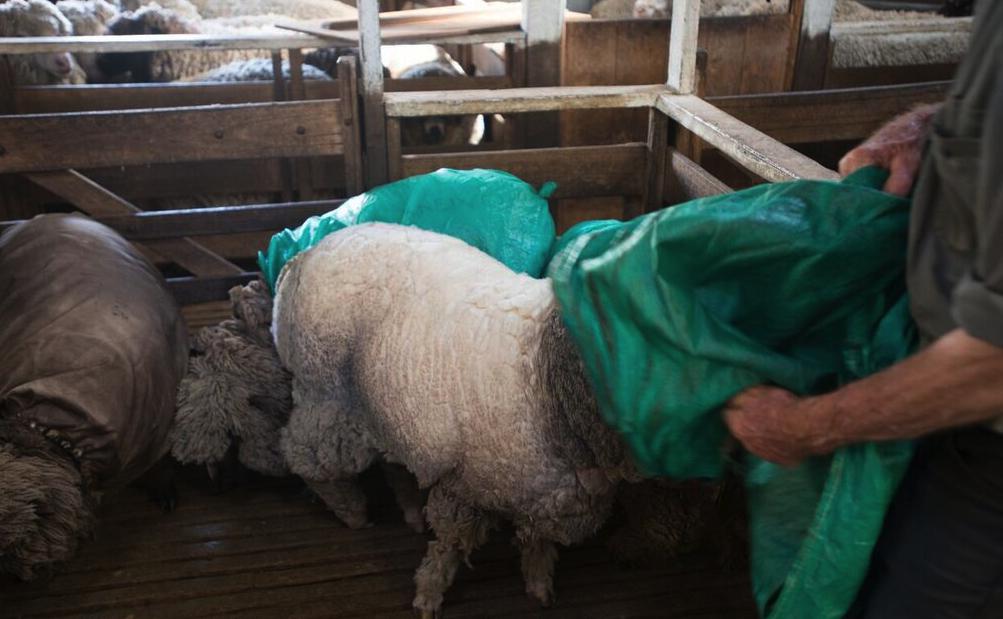
So how long has the farm been producing yarn?
Wendy has been producing yarn since 1985. Over the past thirty years, we’ve worked with a variety of mills in Victoria, including Meskills in Kyneton, Woolabar in Ballarat and CSIRO in Geelong, but unfortunately all of these mills have now shut.
I know that Wendy had to make the decision to go to NZ for processing- is there any hope that it will be able to be done locally in the future? Is processing the biggest challenge for you and other producers in Australia?
The spinning mill in New Zealand does a fabulous job with our fibre. The mill itself has an extremely high-quality setup and, with the long staple-length of the Polwarth, our wool is well suited to their processing. Importing and exporting, even just across the Tasman Sea, adds many layers of complexity and cost, but we think it’s worth the effort.
There are a number of micro mills in development stage in Australia, and we’re definitely watching them, but we can’t compromise the spin quality, so any new mills have a high standard to reach. We put so much effort into growing good fibre that we need the final stages of processing to bring out the best in what we produce. Processing is our biggest challenge – outlay, reliability, handling – but we want to provide products that textilers want, so we take on that challenge.
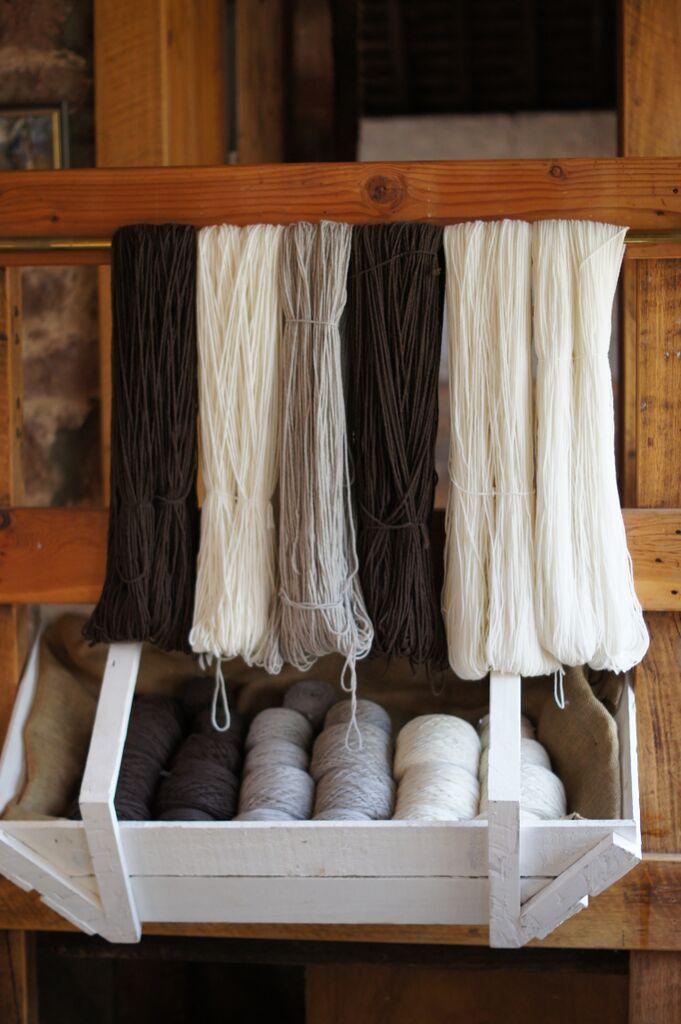
By the look of it, all your yarn is spun worsted- why is that? Is that reference (and if so why?) or available machinery?
Worsted is suited to soft, long-stapled fibre. We’ve spun both woollen and worsted over the years, but we feel woollen-spun has a different feel – perhaps a little firmer or harsher – despite it being the same base fibre. Knitters comment on how our worsted spun yarns are smooth and easy to work with.
And you also sell hand-dyed yarn- does Wendy dye it all herself? Any particular inspiration for the palette and colours?
Wendy dyes it all herself using Landscape dyes from Melbourne in the dye studio on the farm. She says her inspiration comes from the garden, trees, nature and anything she sees outside on the farm- she doesn’t spend a lot of time indoors! She also admitted that she sometimes “gets pots and throws in whatever dye is there” which is quite characteristic of her, but she obviously has some deep-seated sense of design!
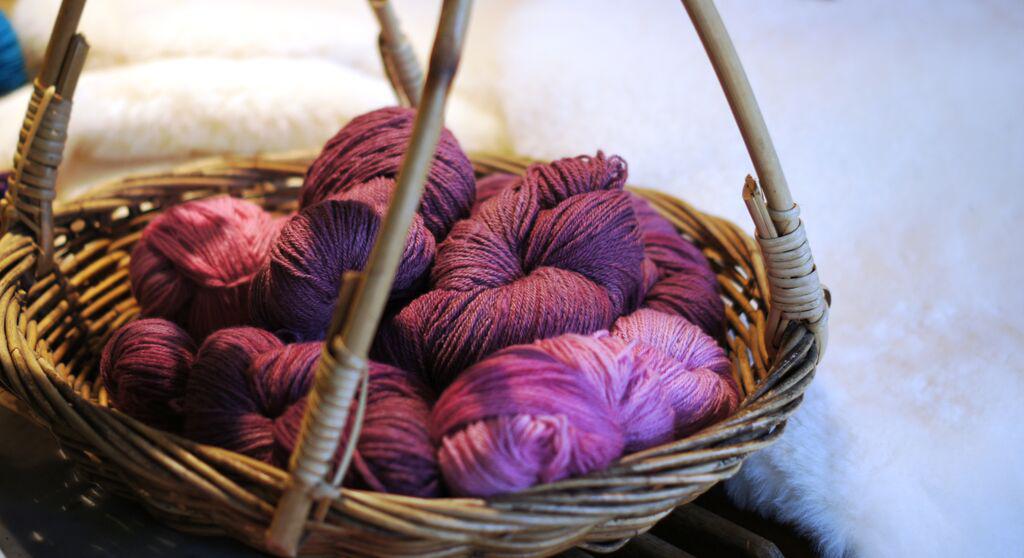
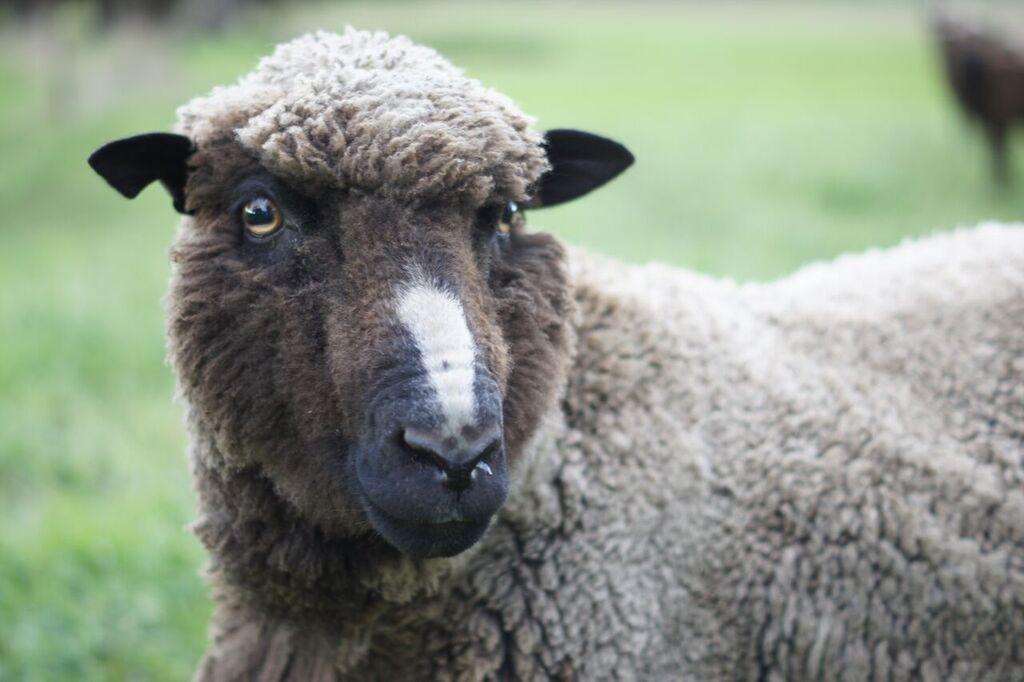
Thanks so much, Wendy, Dave and Tom – and long may the Dennis family hold the Polwarth dear and grow such beautiful fibre for us!
Thank you so much, Julia, for an incredible insight into the Polwarths and how the Dennises have worked for generations with the breed. It is heartening too, to read of their pride in their product and how they strive to keep production as geographically concentrated as they possibly can, as challenging as that is in Australia.